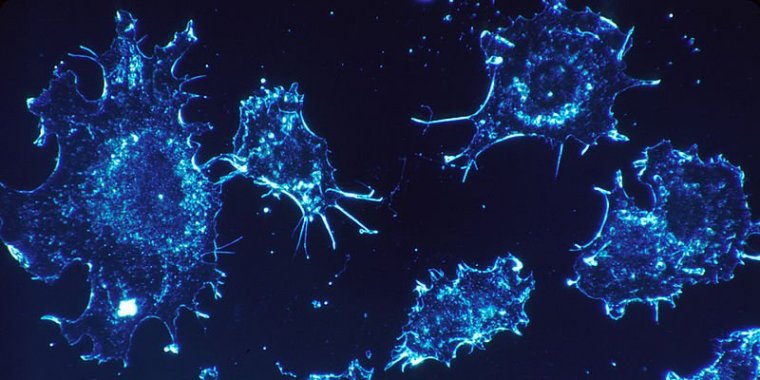| Health / Health News |
‘Energetic Cancer Cells’ May Be Origin of Cancer Spread
Researchers claim to have found a particular type of cancer cell that is more dangerous than others, and it might be at the origin of how cancer spreads and grows.

Cancer cells. Photo: Dr. Cecil Fox/National Cancer Institute
Cancer treatment still follows a practically medieval method of cut, burn or poison. If the growth can't be cut out through surgery, it may be burnt away with radiation or poisoned by chemotherapy. As a result, cancer therapy remains a daunting diagnosis for patients and treatment options seem limited for a disease which causes one in six deaths globally.
Most drugs are made to target "bulk" cancer cells, but not the root cause: the cancer stem cell. Cancer stem cells, also known as "tumor-initiating cells", are the only cells in the tumor that can make a new tumor.
New therapies that specifically target and eradicate these cancer stem cells are needed to prevent tumors growing and spreading, but for that there needs to be more clarity around the target.
This new research may have discovered such a target. The researchers have identified and isolated cells within different cancerous growths which we call the "cell of origin".
The experiments on cancer cells derived from a human breast tumor found that stem cells – representing 0.2 percent of the cancer cell population – have special characteristics. They generate vast amounts of energy and proliferate rapidly. They resemble the cancer cell of origin that has escaped senescence – the natural process of cell ageing and "death" which concludes a healthy cell life cycle.
These are thought to be the first cancer cells which start the process of uncontrolled cell multiplication and cause tumors to form.
These cancer stem cells undergo anchorage-independent growth, also known as growth in suspension, without any tissue attachment. This is how metastasis occurs – spreading via the blood vessels and lymphatic vessels. These features put them front and center as a new target for anti-cancer therapy.
With astonishing luck, these energetic cancer stem cells are color-coded which means they have a natural phosphorescent glow, making them easy to identify and target.
Now that we have found them and we know how they behave, it should be relatively simple to find drugs to target cancer stem cells. They are easily targeted with a mitochondrial inhibitor or a cell cycle inhibitor, which would prevent their proliferation.
Ultimately, this means that if we focus on energetic cancer stem cells, we may be able to directly hit the target. We might be able to turn cancer into a manageable chronic disease, like diabetes. (Tasnim News Agency)
YOU MAY ALSO LIKE



